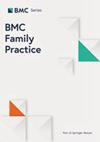Assessment and management of chronic insomnia disorder: an algorithm for primary care physicians
IF 3.2
3区 医学
Q1 MEDICINE, GENERAL & INTERNAL
引用次数: 0
Abstract
Primary care physicians often lack resources and training to correctly diagnose and manage chronic insomnia disorder. Tools supporting chronic insomnia diagnosis and management could fill this critical gap. A survey was conducted to understand insomnia disorder diagnosis and treatment practices among primary care physicians, and to evaluate a diagnosis and treatment algorithm on its use, to identify ways to optimize it specifically for these providers. A panel of experts developed an algorithm for diagnosing and treating chronic insomnia disorder, based on current guidelines and experience in clinical practice. An online survey was conducted with primary care physicians from France, Germany, Italy, Spain, and the United Kingdom, who treat chronic insomnia patients, between January and February 2023. A sub-sample of participants provided open-ended feedback on the algorithm and gave suggestions for improvements. Overall, 106 primary care physicians completed the survey. Half (52%, 55/106) reported they did not regularly screen for insomnia and half (51%, 54/106) felt they did not have enough time to address patients’ needs in relation to insomnia or trouble sleeping. The majority (87%,92/106) agreed the algorithm would help diagnose chronic insomnia patients and 82% (87/106) agreed the algorithm would help improve their clinical practice in relation to managing chronic insomnia. Suggestions for improvements were making the algorithm easier to read and use. The algorithm developed for, and tested by, primary care physicians to diagnose and treat chronic insomnia disorder may offer significant benefits to providers and their patients through ensuring standardization of insomnia diagnosis and management.慢性失眠症的评估和管理:面向初级保健医生的算法
初级保健医生往往缺乏正确诊断和管理慢性失眠症的资源和培训。支持慢性失眠症诊断和管理的工具可以填补这一重要空白。我们开展了一项调查,以了解初级保健医生对失眠症的诊断和治疗方法,并对诊断和治疗算法的使用情况进行评估,以确定专门针对这些提供者的优化方法。专家小组根据现行指南和临床实践经验,制定了慢性失眠症诊断和治疗算法。2023 年 1 月至 2 月期间,对法国、德国、意大利、西班牙和英国治疗慢性失眠症患者的初级保健医生进行了在线调查。一部分参与者对算法提供了开放式反馈,并提出了改进建议。共有 106 名初级保健医生完成了调查。一半(52%,55/106)的人称他们没有定期筛查失眠症,一半(51%,54/106)的人认为他们没有足够的时间来满足患者在失眠或睡眠障碍方面的需求。大多数人(87%,92/106)同意该算法有助于诊断慢性失眠症患者,82%(87/106)的人同意该算法有助于改善他们管理慢性失眠症的临床实践。改进建议包括使算法更易于阅读和使用。为初级保健医生开发并由其测试的慢性失眠症诊断和治疗算法可确保失眠症诊断和管理的标准化,从而为医疗服务提供者及其患者带来显著益处。
本文章由计算机程序翻译,如有差异,请以英文原文为准。
求助全文
约1分钟内获得全文
求助全文
来源期刊

BMC Family Practice
医学-医学:内科
CiteScore
3.20
自引率
0.00%
发文量
0
审稿时长
4-8 weeks
期刊介绍:
BMC Family Practice is an open access, peer-reviewed journal that considers articles on all aspects of primary health care research. The journal has a special focus on clinical decision making and management, continuing professional education, service utilization, needs and demand, and the organization and delivery of primary care and care in the community.
 求助内容:
求助内容: 应助结果提醒方式:
应助结果提醒方式:


